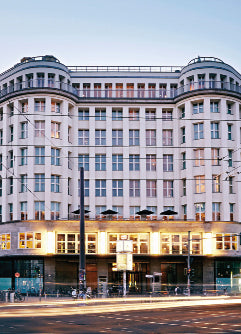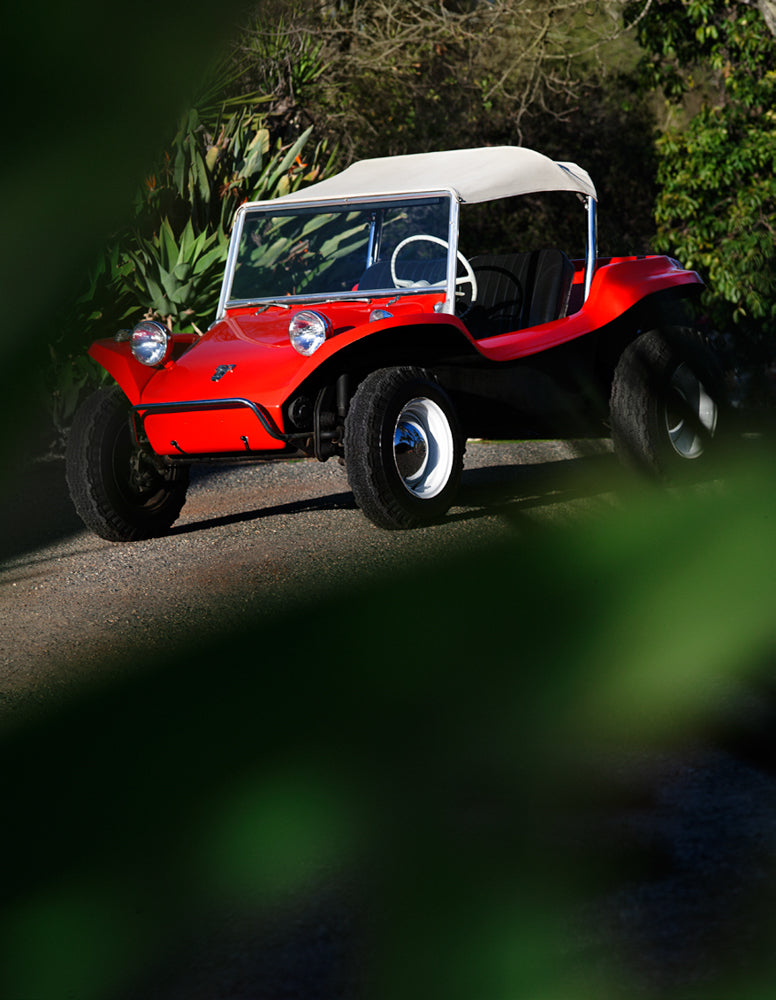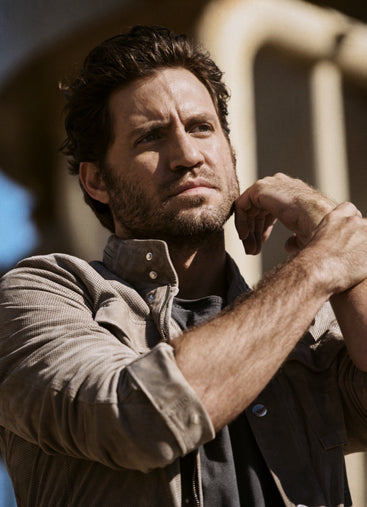
Passport: Berlin
PASSPORT: BERLIN

LESS POOR, STILL SEXY
In 2004, Berlin’s then-mayor Klaus Wowereit sought to attract young creative types by declaring the city arm, aber sexy (“poor, but sexy”). The funny thing is, it worked. Today, Berlin is home to zero big banks and not a single blue-chip company. But what the city does have is culture. There’s a vibrant art scene, along with the best clubs in the world, museums, theaters, opera houses, and indie stages galore. It’s a madcap place with a seductive vibe, from the insane party nights at the Berghain nightclub to extended meals on leafy boulevards in Prenzlauer Berg.
This Berlin spirit that everybody wants to be a part of is the result of a unique set of historical circumstances. After the wall came down in 1989, virtually the entire eastern part of the city became a lawless playground for young people in search of fulfillment. East Berlin in the ’90s was a wasteland — empty buildings, cheap rents, and enough free space to realize everything you’ve ever dreamed of. Money? Not important.
Those days are over, of course, but there’s no need to mourn the past. The city has taken a fresh and unexpected turn. You can feel it in innovative restaurants like Dóttir, in cozy, boho-style cafés like House of Small Wonder, or by simply strolling around in Kreuzberg or Neukölln.
Berlin is all about freedom — especially at night. Everybody can and will do whatever they want, whenever they want, and with whomever they want, and the widespread use of English makes it easy for everyone to communicate. The city is working on what you might call refinement, which is good news, because Berlin can be rough. That the German capital is not exactly an architectural wonder is clear. But take comfort in the fact that even the most depressing concrete blocks will grow on you. You might even find beauty in them. But the crabby cab drivers? Inattentive waiters? Indifferent shop assistants? That’s Berlin, too. Take it with a smile.
The city has cleaned up a bit in the last two decades, but an edgy urbanity persists — in the nightlife, but also in the ruins of the Berlin Wall at Bernauer Strasse, the refurbished Reichstag building, and scores of old Prussian palaces. Graffiti meets cobblestone, high-end boutique hotels abut dimly lit, barely furnished dives. This choatic cross-pollination of club culture, art, music, film, and fashion is central to the city’s appeal. The quality of life is high, especially on long summer nights when you’re canal-side with a beer, or watching bikers race down abandoned runways at the gigantic Tempelhofer Park, a former airport.
Berlin is known as a culinary wasteland, but the era of tasteless potato dumplings and heavy gravy is finally behind us. Hundreds of restaurants, cafés, and markets have opened in the past ten years, ushering in inventive new cuisines and plenty of Gault Millaut points and Michelin stars along with them. Tim Raue, who was raised in the scrappy Kreuzberg district, leveraged the city’s grit to excel in the already tough world of fine dining. His eponymous restaurant (two Michelin stars, nineteen Gault Millau points) delights with a unique food concept inspired by multiple Asian cuisines.
Upscale and regionally minded takes on Italian, Japanese, Vietnamese, Israeli, and even Peruvian cuisine are proliferating. There is a lively debate going on about who makes the best burgers and steaks in town and the latest winners are Shiso Burger and Grill Royal. No time to go to southern Italy? Don’t worry, the best Neapolitan pizza you’ve ever tasted is served daily at Standard Pizza in Prenzlauer Berg.
Berlin is all about freedom — especially at night. Everybody can and will do whatever they want, whenever they want, and with whomever they want, and the widespread use of English makes it easy for everyone to communicate. The city is working on what you might call refinement, which is good news, because Berlin can be rough. That the German capital is not exactly an architectural wonder is clear. But take comfort in the fact that even the most depressing concrete blocks will grow on you. You might even find beauty in them. But the crabby cab drivers? Inattentive waiters? Indifferent shop assistants? That’s Berlin, too. Take it with a smile.
The city has cleaned up a bit in the last two decades, but an edgy urbanity persists — in the nightlife, but also in the ruins of the Berlin Wall at Bernauer Strasse, the refurbished Reichstag building, and scores of old Prussian palaces. Graffiti meets cobblestone, high-end boutique hotels abut dimly lit, barely furnished dives. This choatic cross-pollination of club culture, art, music, film, and fashion is central to the city’s appeal. The quality of life is high, especially on long summer nights when you’re canal-side with a beer, or watching bikers race down abandoned runways at the gigantic Tempelhofer Park, a former airport.
Berlin is known as a culinary wasteland, but the era of tasteless potato dumplings and heavy gravy is finally behind us. Hundreds of restaurants, cafés, and markets have opened in the past ten years, ushering in inventive new cuisines and plenty of Gault Millaut points and Michelin stars along with them. Tim Raue, who was raised in the scrappy Kreuzberg district, leveraged the city’s grit to excel in the already tough world of fine dining. His eponymous restaurant (two Michelin stars, nineteen Gault Millau points) delights with a unique food concept inspired by multiple Asian cuisines.
Upscale and regionally minded takes on Italian, Japanese, Vietnamese, Israeli, and even Peruvian cuisine are proliferating. There is a lively debate going on about who makes the best burgers and steaks in town and the latest winners are Shiso Burger and Grill Royal. No time to go to southern Italy? Don’t worry, the best Neapolitan pizza you’ve ever tasted is served daily at Standard Pizza in Prenzlauer Berg.
Then there are the clubs. Ignore the talk of Berghain being over. Just because everyone knows about Berlin’s temple of techno doesn’t mean it’s lost its bite. Get past the door and the music will wash over you. Berghain’s entry policy is a hot-button topic; there are literally hundreds of forums online offering advice — from the bizarre “look more gay” to the relatively reasonable “don’t look too mousy” to the basic “be familiar with the DJ lineup.” In fact, its door is radically democratic. It’s not about fame, money, nationality, skin tone, or gender — it’s not even about looks. It’s about assembling the best imaginable crowd. Still, there is absolutely no shame in being turned away; even regulars suffer that fate. There is always another club.
Locals love to talk about the Berliner Luft (“Berlin air”). It may not be thicker or thinner than anywhere else, but it is certainly more invigorating. Come take a deep breath. Feel it? That’s the spirit.


Andreas Murkudis Potsdamer Strasse 81e
Housed in the former Tagesspiegel newspaper building, this top-notch concept store is Berlin’s most celebrated emporium of good taste. The former printing-machine and packaging halls are painted a brilliant and arresting white. The clothing ranges from high-fashion collections by Dries Van Noten, Gentryportofino, Maison Margiela, and Yohji Yamamoto to leather goods by Isaac Reina and Céline and beauty products by Aesop and Escentric Molecules.
Bikini Berlin Budapester Strasse 38-50
The city’s first concept mall, Bikini Berlin is nestled in a landmark modernist building in Charlottenburg and offers a striking assortment of design products
from all over the world. Don’t miss the pop-up shops on the ground level or the Gestalten Pavilion on the mid-level roof terrace.
Voo Store Oranienstrasse 24
This fashion showroom in Kreuzberg is at the cutting edge of style. Converted from a former locksmith’s shop, it carries brands such as Acne Studios, Helmut
Lang, Our Legacy, Raf Simons, Satisfy, and Phillip Lim, to name a few.
The Corner Französische Strasse 40
This high-end store stocks a daring hodgepodge of established and emerging labels including Givenchy, Lanvin, Vetements, and even Yeezy. But be sure to check out their eclectic selection of rare fashion and photography books.
Lunettes Torstrasse 172 and Dunckerstrasse 18
It takes time to find the perfect frames, and at Lunettes you won’t feel pressured. Both locations offer stellar selections of dead-stock vintage glasses, as well as
options from their own line.
A Kind of Guise Mulackstrasse 23
Known for its uniquely European aesthetic built around minimal pieces, this made-in-Germany label carries contemporary men’s fashion and streetwear. All fabrics are carefully chosen, and each garment is handcrafted by local manufacturers.
Herr von Eden Alte Schönhauser Strasse 14
HvE head designer Bent Angelo Jensen’s collections are sophisticated when necessary but never stale.

Objets Trouvés Brunnenstrasse 169
Most of this vintage furniture shop’s twentieth-century treasures are imported from France and other far-flung locales. Recently found: a pristine Harry Bertoia Diamond lounge chair.
Meister Camera Fasanenstrasse 71
The world’s first Leica store not only stocks the entire range of Leica products, but also used equipment and vintage rarities.
Sammlung Boros Reinhardtstrasse 20
This outstanding private collection of contemporary art is displayed in a former bunker from World War II. Tours are guided — offering great insight into the history of this building — and must be booked in advance.
Checkpoint Charlie Museum Friedrichstrasse 43
YOU ARE NOW LEAVING THE AMERICAN SECTOR reads the sign at Checkpoint Charlie, the infamous crossing point that split East and West Germany during
the Cold War. Just next door is the museum, which chronicles the political and historical milestones of the once divided city.
Maxim Gorki Theater Am Festungsgraben 2
Performances are refreshingly witty in this unconventional theater inspired by immigrants and their stories. Strongly recommended: Israeli director Yael
Ronen’s shows, all of which are subtitled in English.
C/O Berlin Hardenbergstrasse 22
Until 2006, the Amerika Haus in Charlottenburg served as a cultural information center for the US in Berlin. Today, it houses one of the best private exhibition spaces for photography in the city. Annie Leibovitz, Anton Corbijn, and Nan Goldin have all shown here.
Classic Remise Wiebestrasse 36-37
An out-of-the-way automotive museum in the Moabit district packed with vintage Porsches, Jags, Benzes, Maseratis, and Mustangs. Their priciest stuff is encased behind glass, but most of the rarities are just parked on the main floor.


Tim Raue Rudi-Dutschke-Strasse 26
Master chef Tim Raue’s two-Michelin-starred flagship near Checkpoint Charlie prides itself on informality. The front staff wear matching jeans and sneakers, giving the sleek interior a laid-back feel. Go for the six-course tasting menu and bite into some Wagyu beef, lobster, and truffles.
Pauly Saal Auguststrasse 11-13
This high-ceilinged hall in a former Jewish girl’s school in the Mitte district boasts striking Murano glass chandeliers and walls covered with locally made ceramic tiles. The cuisine is based on high-quality ingredients, served without frills. It has a charming brick patio perfect for a light summer lunch.
Dudu Torstrasse 134
Every year, fashion week completely upends Berlin’s devil-may-care attitude, turning Dudu into a hotbed of hot people with corporate expense accounts. Maybe choose another week and slide right in — the food is fantastic.
Grill Royal Friedrichstrasse 105b
This splendid gourmet dining venue overlooking the River Spree is the city’s top draw for celebrities and socialites. The whimsical decor of quirky antiques and circular booths gives it a particularly charming feel. A large portion of roasted shrimp to share is the go-to item, but follow it up with German, American, and Austrian meats, because nothing goes better with fish than flesh.
Paris Bar Kantstrasse 182
This legendary French bistro in Charlottenburg hasn’t changed much since it opened just after World War II. A longtime art-world watering hole, its walls are lined with paintings and drawings that owner Michel Würthle acquired as payment from struggling artists.
Dóttir Mittelstrasse 41
Shortly after opening, this nouveau restaurant had the foodies raving about Scandinavian herbs and Icelandic barley. Located in a vacant house in the Mitte district, head chef Victoria Eliasdóttir, the sister of Berlin-based artist Olafur Eliasson, creates experimental dishes inspired by Nordic cuisine.
Standard-Serious Pizza Templiner Strasse 7
The grand mission of this stylish parlor is to create the best Neapolitan-style pizza in Germany, if not the world. They source ingredients like San Marzano tomatoes and fiordilatte mozzarella directly from southern Italy. The result is a sublime pie with perfect crust.

Cordobar Grosse Hamburger Strasse 32
This funky German-Austrian restaurant tucked away on a small street in Mitte has more than nine hundred carefully selected wines on the menu, many of which
are served by the glass. But getting wine drunk is only half the fun — the food is also outstanding. Try the black pudding pizza with wasabi or the Peking duck liver parfait with macadamia nuts.
Shiso Burger Auguststrasse 29c
Offbeat burger combinations and awesome homemade french fries are this creative Korean-American joint’s specialties. Portions are not huge, but every morsel is loaded with flavor. Even their veggie options are delicious.
Kater Blau Holzmarktstrasse 25
This foodie favorite is hidden along the banks of the Spree at the former address of Bar25, a revered, over-the-top nightclub from the early 2000s. Kater Blau looks like a wooden shack (in a good way) and has a huge dance floor and great drinks, but its locally sourced ingredients, fresh-baked bread, and hearty desserts draw
the crowd.
Long March Canteen Wrangelstrasse 20
This trendy Chinese restaurant in the Kreuzberg district lives up to the hype. Specialties like marinated chicken skewers with water chestnuts and fried duck tongues (!) are served in steamy bamboo baskets.
The Barn Auguststrasse 58 While circular discussions about who makes the best coffee in the city persist, this rustic-chic café in Mitte is deserving of high, if not the highest, praise.
Betty’n Caty Knaackstrasse 8
This charming café in the heart of the Prenzlauer Berg district seduces locals with delicious porridge variations and an amazing strawberry-rhubarb crumble. Also try the quinoa quiche with spinach and beetroot for a lunch you won’t have to walk off.
House of Small Wonder Johannisstrasse 20
A charming oasis on a small street just off the bustling Friedrichstrasse, this Asian-American concept café specializes in organic comfort food jazzed up with Japanese spices. The bread, croissants, and pastries are baked fresh throughout the day, making it an ideal spot for an extended breakfast or afternoon snack.

Buck and Breck Brunnenstrasse 177
This one-room bar in the Mitte district can only hold fourteen people at a time. Those lucky enough to be buzzed in can look forward to a sleek, understated interior and some of the tastiest cocktails in town. Signature drink: the Buck and Breck, whose recipe dates back to the nineteenth century.
Lang Bar at Waldorf Astoria Berlin Hardenbergstrasse 28
Berlin and glamour aren’t easy bedfellows, but this serious cocktail lounge staffed with highly trained mixologists is a notable exception.
TiER Weserstrasse 42
Viewed from the street, this bar could be the diner from Edward Hopper’s Nighthawks. Soft lighting and low-slung vintage hardware make it the perfect setting for intimate conversation. The bar menu and vinyl collection stick to the classics, while the smoking-welcome policy remains delightfully retro.
Kosmetiksalon Babette Karl-Marx-Allee 36
Ever had a cocktail in a communist cosmetic salon? Now you can. Located on a breezy socialist boulevard, this modernist cube has floor-to-ceiling windows instead of walls, making it the go-to spot in Berlin for late-night people-watching.
Berghain Am Wriezener Bahnhof
In this world-famous techno citadel, the DJs play marathon sets that run non-stop night and day, through the weekend and into Monday afternoon. The venue’s main room was once the turbine hall of an East Berlin power plant and has concrete walls running up to a towering, sixty-foot ceiling. The sweaty dancers wear almost nothing, there are no mirrors anywhere, and photos are strictly forbidden. For serious partiers only.


Tausend Schiffbauerdamm 11
One of the city’s most visually striking bars, Tausend is hidden behind an almost invisible steel door under the S-Bahn railway tracks. The futuristic main area is
basically a long tunnel with cleverly placed mirrors and circular lights. It’s famous
for excellent drinks and a stylish clientele. Another well-kept secret is the Cantina,
a high-class restaurant hidden behind the bar. Call in advance for reservations.
Watergate Falckensteinstrasse 49
It’s not as wild as Berghain, but you’ll still have a blast at this throbbing hot spot in Kreuzberg which boasts the best house, break-beat, and drum-and-bass nights in the city. It has commanding windows overlooking the Spree and a great light and sound system.
Das Stue Drakestrasse 1
Situated a stone’s throw from the Berlin Zoo, this embassy turned upmarket boutique hotel has a Michelin-starred kitchen, an excellent spa, and interiors conceived by Spanish design darling Patricia Urquiola.
Soho House & Cowshed Spa Torstrasse 1
Even if you’ve let your membership lapse you can still enjoy the Berlin branch’s fantastic rooftop bar and bustling downstairs bistro. Just book a massage at the Cowshed Spa. Works every time.
Hotel de Rome Behrenstrasse 37
Housed in a 19th century bank building, this high-end boutique hotel strikes the right balance between formal and friendly. Even the vault has been put into service — it’s now home to one of Berlin’s best spas.


